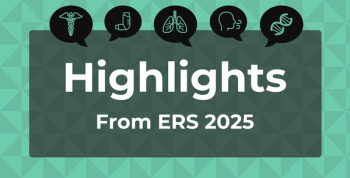
Back-to-Back Reports From CDC: Americans Gaining Weight, Using More Marijuana
The state-by-state obesity figures revealed huge health disparities. Obesity rates for whites reached 35% in just 2 states, while the rates reached 35% for blacks in 34 states and the District of Columbia, and 11 states for Hispanics.
In 2 reports published just 1 day apart, the CDC revealed separate, unsettling assessments of American health: in 2014, the country gained an average of 7000 new
And in 2015, the country continued its battle with
If there’s good news, it’s that this year
The CDC report issued Thursday featured state and territory maps from the Behavioral Risk Factor Surveillance System (BRFSS). The BRFSS conducts telephone surveys to collect data each year from all 50 states, the District of Columbia and 3 US territories. Results are based on interviews with 400,000 US adults. The CDC says the BRFSS is the largest continuously conducted health survey of its kind in the world.
Findings from the survey include:
- No state had an obesity rate of less than 20%
- 6 states had obesity rates of 20% to less than 25%: California, Colorado, Hawaii, Massachusetts, Montana, and Utah
- 19 states and Puerto Rico had rates of 25% to less than 30%
- In 21 states and Guam, rates were 30% to less than 35%
- The South had the highest prevalence of obesity at 31.2%, while the West had the least at 25.2%
The data reveal huge health disparities: While the self-reported obesity rate for whites was 35% or higher in just 2 states, it reached that rate for blacks in 34 states and the District of Columbia, and for Hispanics in 11 states.
Marijuana Use
Results from the National Survey on Drug Use and Health come as
The CDC reported today that since 2014, a total of 2.5 million people age 12 or older had used marijuana for the first time in the past 12 months. In the period since 2002, marijuana use during the past month, past year, and daily use had all increased among those 18 years and older, but not among those 12 to 17 years old. The public health concern, according to the report, is preventing marijuana use among adolescents at a time when it becomes more accepted among adults.
“The health effects associated with marijuana use are widely debated,” the authors wrote. “However regular use (daily or almost daily) during adolescence poses public health concerns, including reduced educational attainment, potential long-term health consequences, addiction in some users, increased risk for psychoses disorders, altered brain structure and function, and increased risk for injury from driving while under the influence.”
The CDC researchers found that while marijuana remains most popular among young adults, it is gaining ground among older adults. Since 2002, the share of respondents who had used marijuana in the past month rose 7% among those aged 18-25 years old, from 29.8% in 2002 to 31.9% in 2014. Among those age 26 or older, use in the past month rose 44%, from 7% in 2002 to 10.1% in 2014.
Among those aged 12 to 17, use in the past month fell between 2002 to 2014, from 15.8% to 13.1% in 2014.
Regular users increased significantly but still accounts for a small share of the population, the authors report. From 2002 to 2014, prevalence of “daily or almost daily use in the past year” rose 92% from 1.3% to 2.5% from 2002 to 2014, and in the past “in the past month” by 75% from 2% to 3.5% in 2014. Both figures were for persons age 12 or older; a closer look at the data showed that daily among adolescents decreased.
References
1. Azofeifa A, Mattson ME, Schauer G, McAfee T, Lyerla R. National estimates of marijuana use and related indicators-national survey on drug use and health, United States, 2002-2014. MMWR Survell Summ. 2016;65(SS-11):1-25: DOI:Â
2. CDC website. Adult obesity prevalence maps.
Â
Newsletter
Stay ahead of policy, cost, and value—subscribe to AJMC for expert insights at the intersection of clinical care and health economics.













































